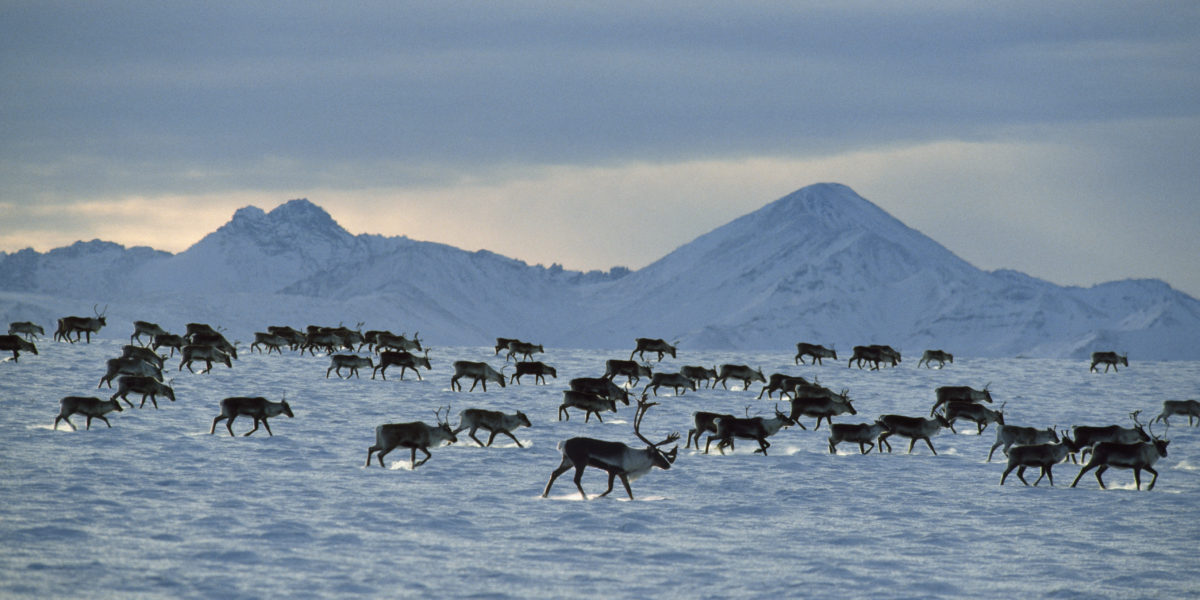
Wildlife Are Evolving to Survive a Rapidly Warming Arctic—but Can They Adapt Fast Enough?
The analysis looked at more than 200 research studies that spanned nearly three decades.

Getty Images

Wildlife in the Arctic are hastily changing behavioral patterns in a desperate race to keep up with a climate that continues to warm at twice the rate of the rest of the world.
That was the conclusion of a recent paper published in Science journal that examined nearly three decades of scientific studies analyzing the effects of climate change on the region’s animals.
The effort to collect data from more than 200 prior studies, a joint initiative known as the Arctic Animal Movement Archive, yielded a wealth of information on the survivability patterns—particularly migration and mating—of 96 total species, including caribou, moose, eagles, bears, and wolves.
“I would say this is an early example of what we might call global animal movement ecology,” Elie Gurarie, an associate research scientist with the University of Maryland and co-author of the paper, said in a release.
“We’re increasing our ability to monitor the pulse of animal populations across the Earth and ask big picture questions about what it means.”
What the findings indicate is alarming.
From 1993 to 2017, migration patterns of juvenile golden eagles trended earlier in the year following a warmer winter. Such a shift, the study concluded, could have the potential to be a catalyst for breeding issues and the survival rate of chicks.
Behaviors among caribou herds were also determined to have shifted as a result of a warming climate. Nearly 1,000 female caribou were tracked during much of the study’s duration. Of that population, those farthest north were found to have mated earlier than southern herds, a shift that could result in calves being born on infertile land before their mothers could reach areas with abundant vegetation.
The documentation of wolves, moose, and bears between 1998 and 2019 also revealed fluctuating migrations, behavioral shifts that could be detrimental to the natural predator-prey balance in the region. Predatory animals, for example, were less likely to travel greater distances in higher temperatures than their plant-eating prey.
A separate 2019 study led by a team of scientists from the Leibniz Institute for Zoo and Wildlife Research cast a similarly ominous shadow over the future of the Arctic’s wildlife when it concluded that the aforementioned adaptations were unlikely to keep up with the rapidly changing climate.
“We did not find evidence for adaptive change in all species,” the authors wrote in the journal Nature Communications. “And even populations undergoing adaptive change may do so at a pace that does not guarantee their [survivability].”
The alarming impacts of climate change came to the fore during the waning days of July, when it was confirmed that the Canadian Arctic’s last intact ice shelf began its long-dreaded collapse, severing over 40 percent of its total area near Nunavut’s Ellesmere Island.
A combination of air temperatures 5 degrees Celsius above average, offshore winds, and shifting waters adjacent to the Milne Ice Shelf instigated a break of ice approximately 80 square kilometers in size, or roughly 20 square kilometers larger than Manhattan.
Arctic ice disruptions have become commonplace amid a three-decade heat wave in the region, where temperatures continue to degrade smaller ice caps and glaciers.
“The very small (glaciers), we’re losing them dramatically,” Luke Copland, glaciologist at the University of Ottawa, told Arctic Today.
“You feel like you’re on a sinking island chasing these features, and these are large features. It’s not as if it’s a little tiny patch of ice you find in your garden.”
Mark Serreze, the director of the Boulder, Colorado-based National Snow and Ice Data Center (NSIDC), likened the slow and inevitable deterioration to watching “someone with terminal cancer.”
“It was only a matter of time,” Serreze told Arctic Today, adding that there are two more Ellesmere ice caps—bodies believed to have formed hundreds of years ago—that will likely be gone within the next decade.
